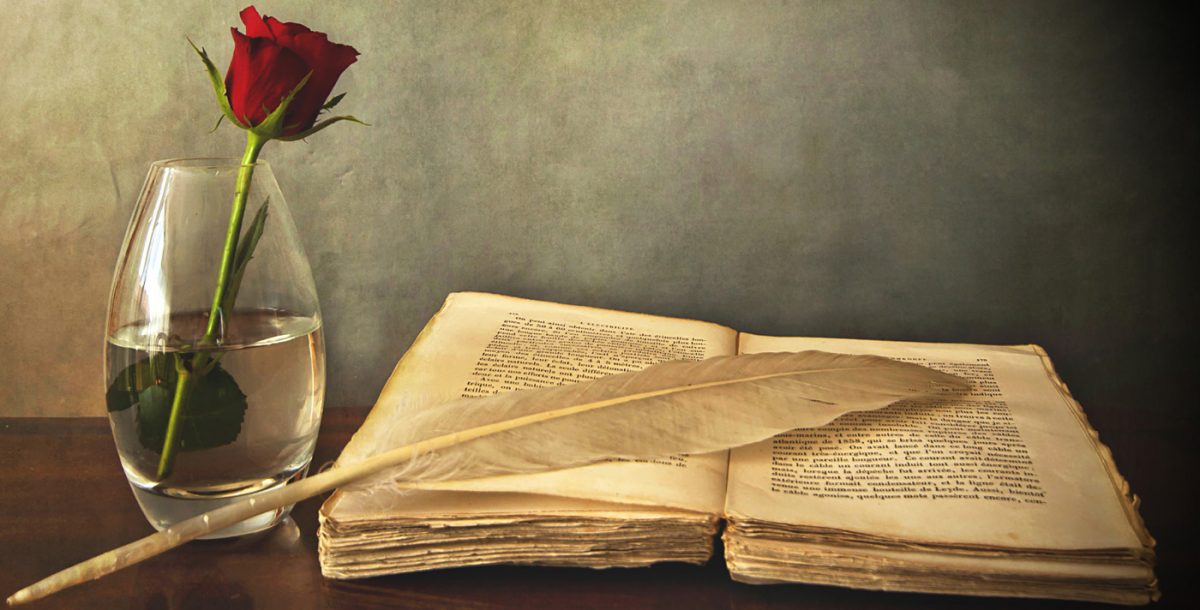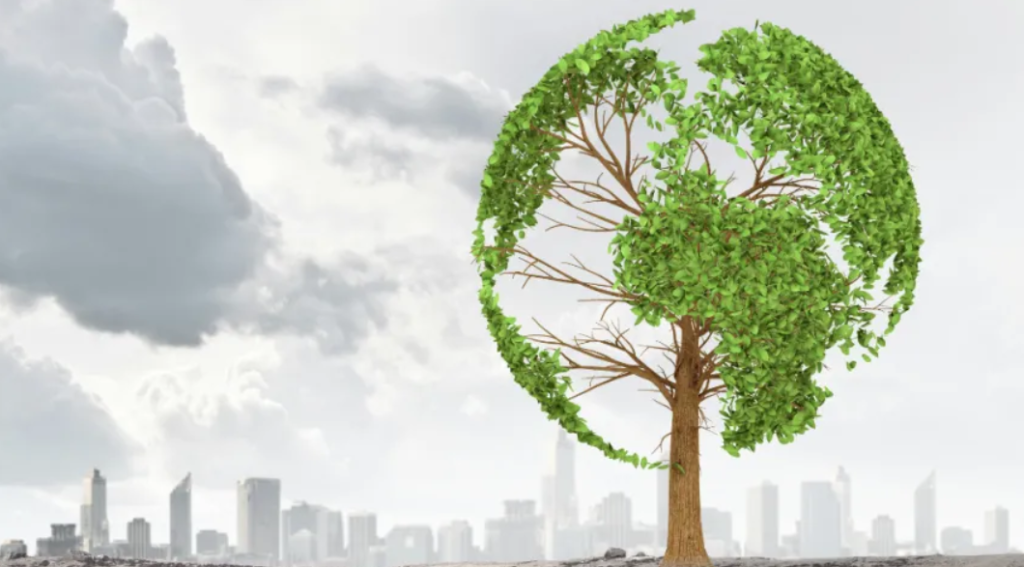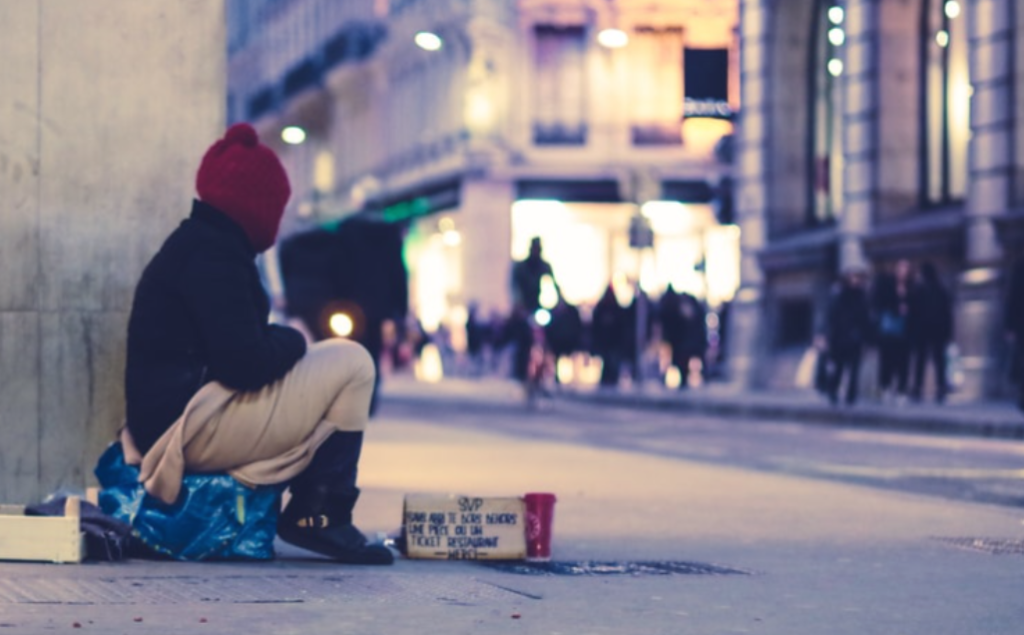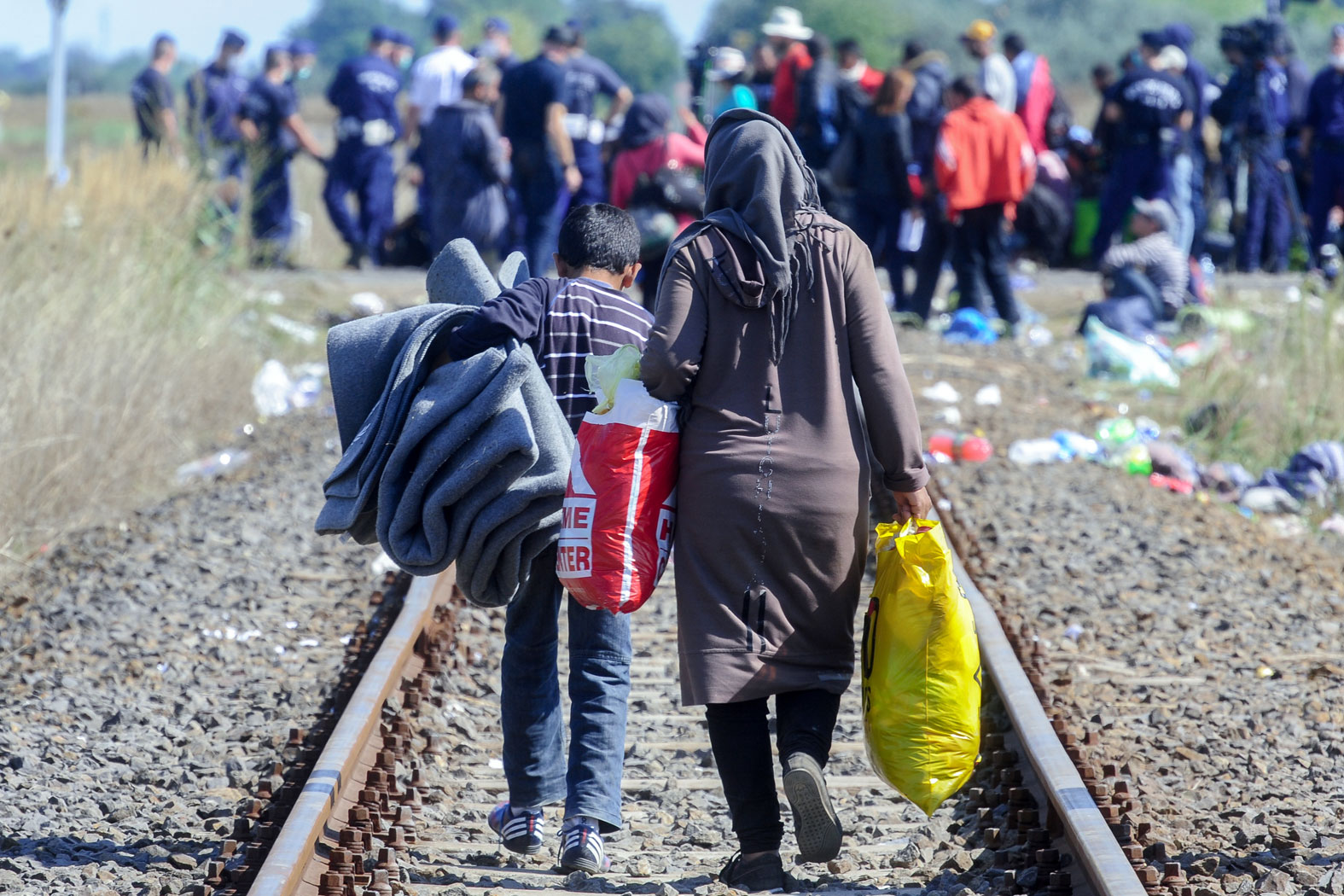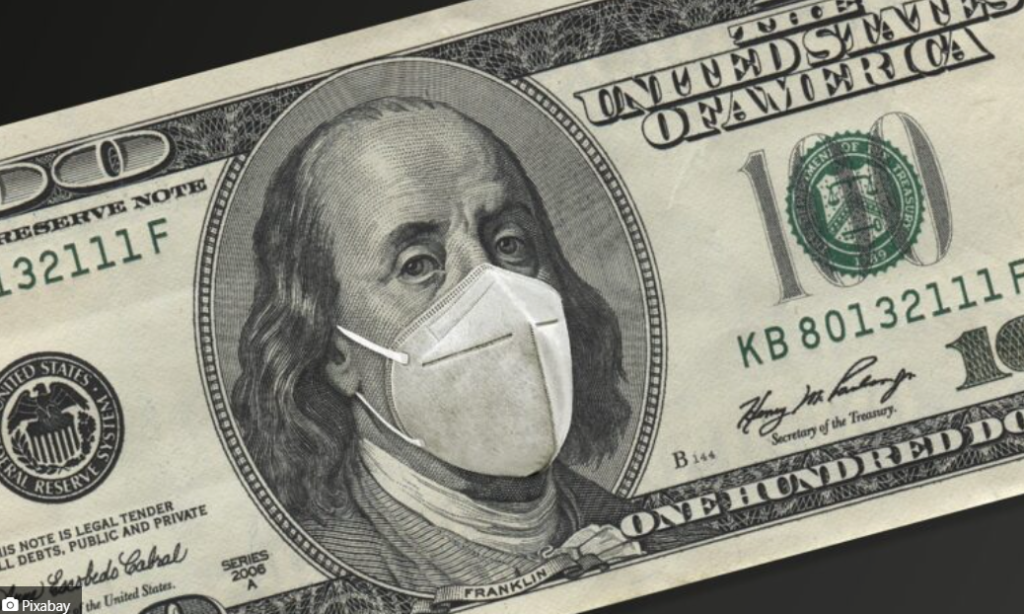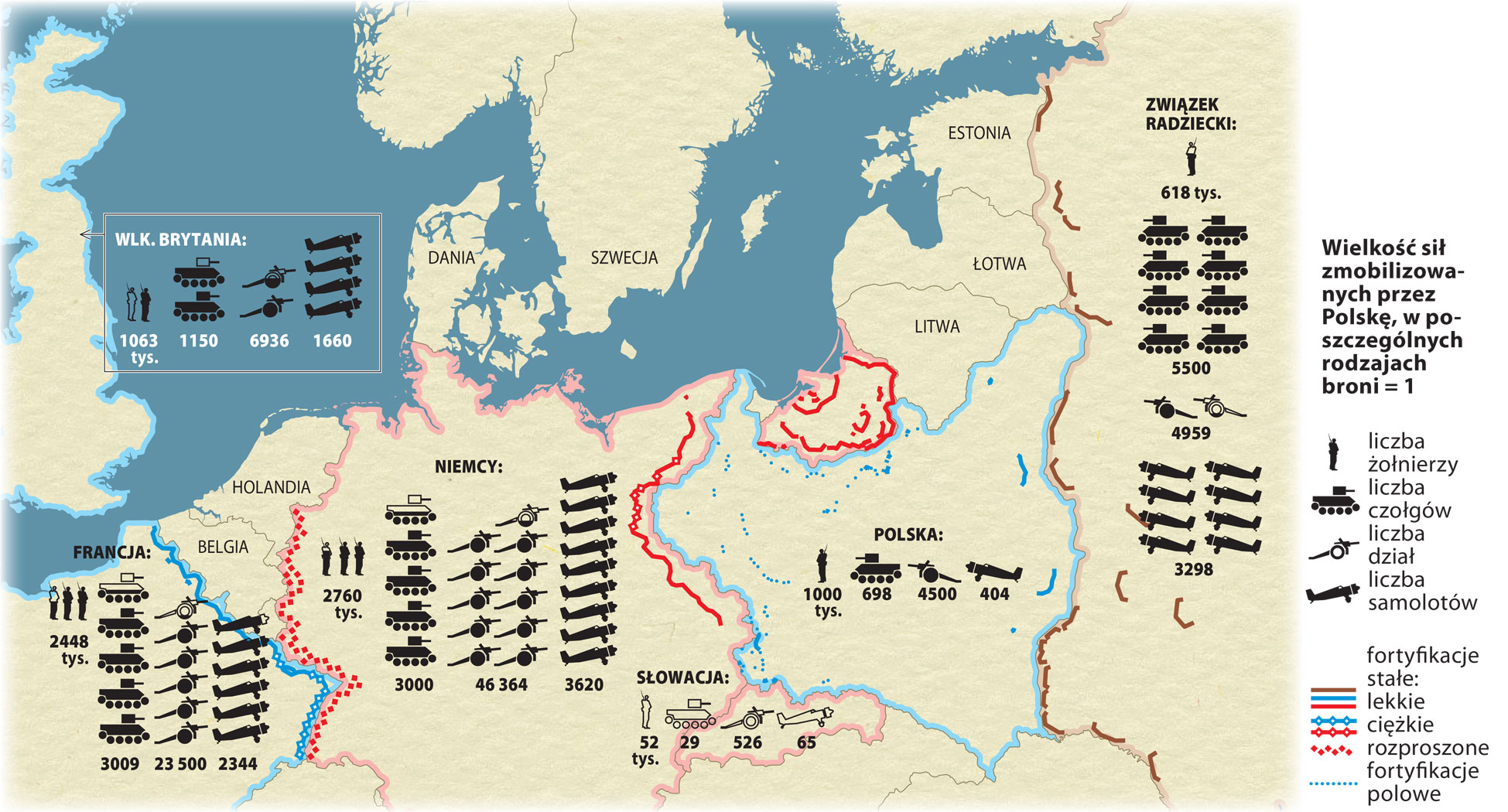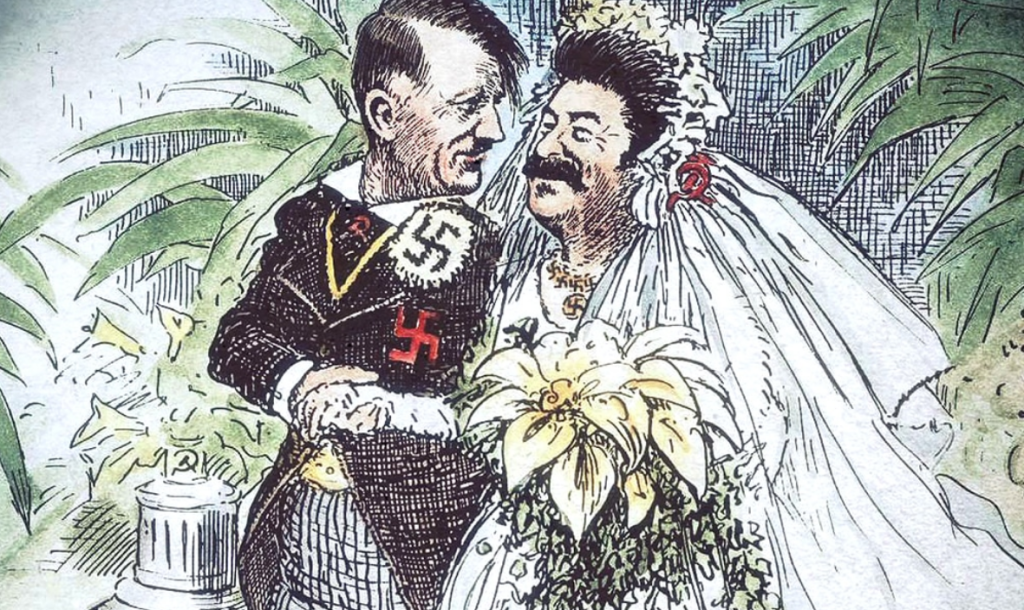› Jak się przedstawiała sytuacja ludności cywilnej w okupowanej przez Niemców Europie?
› W których krajach była ona najtrudniejsza?
› W jaki sposób starano się przeciwstawiać polityce okupanta?
CEL: dowiedzieć się, jak kształtował się los społeczności żydowskiej w czasie II wojny światowej.
› Jaką politykę wobec Żydów prowadzili naziści po dojściu do władzy w Niemczech oraz jakie były jej podstawy?
-Niemcy przedstawiciele rasy aryjskiej
-Ludy Europy Południowo – Wschodniej były „podludźmi”. Untermensch był używany w stosunku do Słowian, wliczając w to Rosjan, Serbów i etnicznych Polaków.
*Niemcy zabili około dwa miliony ludności słowiańskojęzycznej na terenie II RP, którzy nie byli Żydami, podczas działań wojennych, pożarów i straceń więźniów
-Żydzi i Cyganie – najniżej ze wszystkich ras według nazistowskiej polityki rasowej – Lebensunwertes Leben – życie niegodne życia -> eksterminacja podczas Holokaustu i Porajmos
ROLA PROPAGANDY – Joseph Goebbels
-upowszechnia teorie nazistowskie
-nawet architektura ma na celu stworzenie „nowego porządku” i udoskonalenie „rasy arysjskiej”
-sport to sposób na „regenerację rasy” – Żydzi są postrzegani jako niechlujni, prowadzący siedzący tryb życia i bez kondycji fizycznej.
– duża rola Hitler-Jugend –> stworzenie żołnierzy, którzy wiernie walczyliby za III Rzeszę
-kino wykorzystywane przez Ministerstwo Propagandy do promowania teorii rasowych.
* Prawodawstwo –> ustawy norymberskie z 1935 roku oraz ustawa o zapobieganiu narodzin potomstwa obciążonego chorobą dziedziczną z lipca 1933 roku.




Generalny Plan Wschodni (GPW) – był to plan osiedlenia Niemców na obszarach byłej Rzeczypospolitej oraz w europejskiej części ZSRR oraz zgermanizowania tych obszarów, zgodnie z teorią zdobycia Lebensraum („przestrzeni życiowej”) .
Plan ten zakładał:
-wysiedlenie Słowian z Polski, Białorusi, Ukrainy, Rosji za Ural
– pozostali mieli wykonywać niewolniczą pracę,
-całkowita zagłada Żydów i Romów.
Obozy koncentracyjne
– w Niemczech od 1933 r. (np. Mauthausen, Sachsenhausen, Dachau, Ravensbrück)

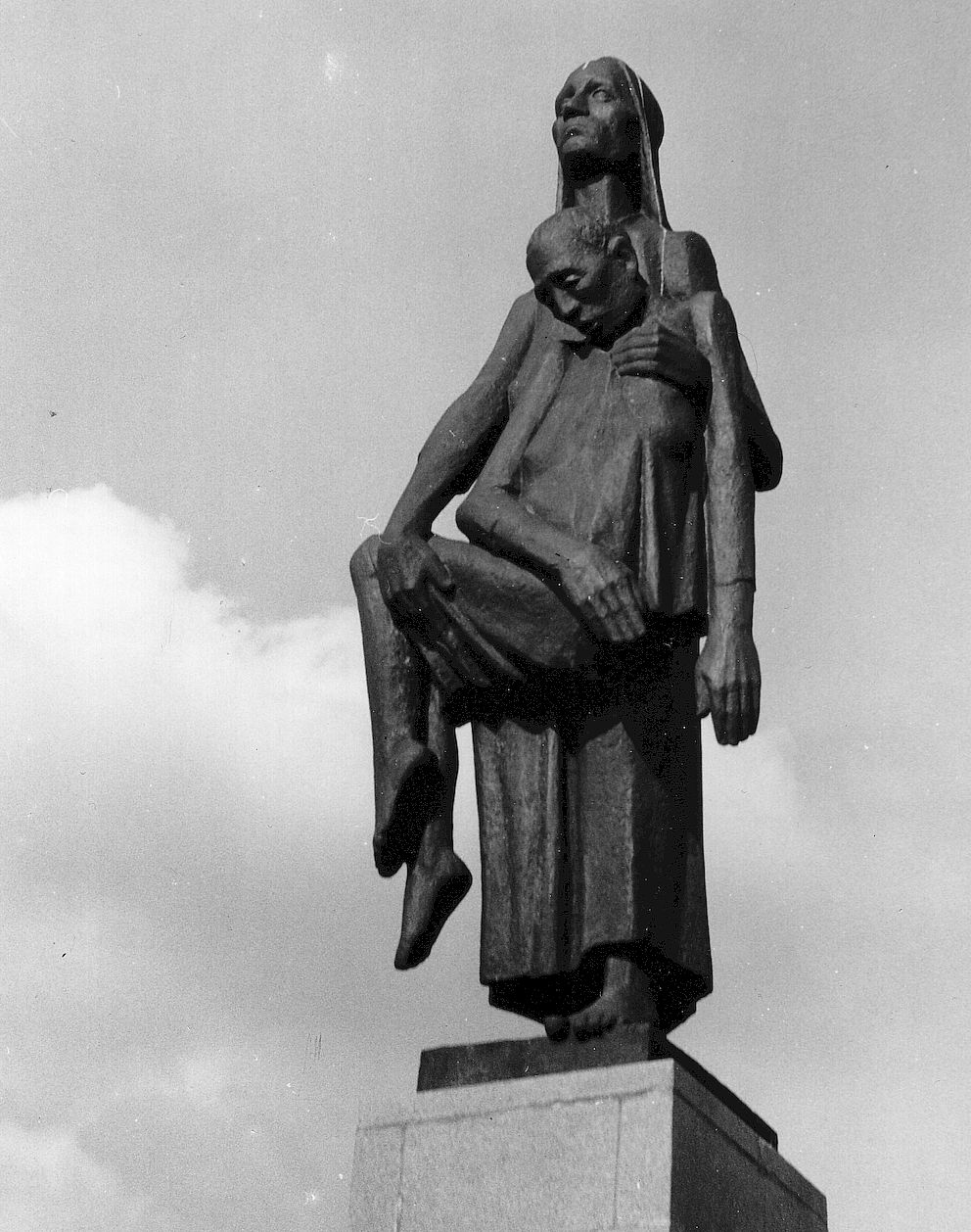
– przeznaczone dla:
-inteligencji i przedstawicieli elit,
-członków ruchu oporu,
-ludzi przypadkowo złapanych w tzw. „łapankach”,
– jeńców wojennych
-Żydów i Romów,
Polityka niemiecka wobec Żydów – celem całkowita eksterminacja narodu.
1. prześladowania Żydów w krajach okupowanych:
-naznaczenie (opaski z gwiazdą Dawida),
-izolacja – getta
-zagłada ludności żydowskiej.
Holokaust („spalony w całości” – zagłada ponad 6 milionów Żydów podczas II wojny światowej )= ludobójstwo Żydów = Szoah (hebr. całkowita zagłada) = Zagłada
KONFERENCJA W WANNSEE – 20 stycznia 1942 – Endlösung der Judenfrage („ostateczne rozwiązanie kwestii żydowskiej”)
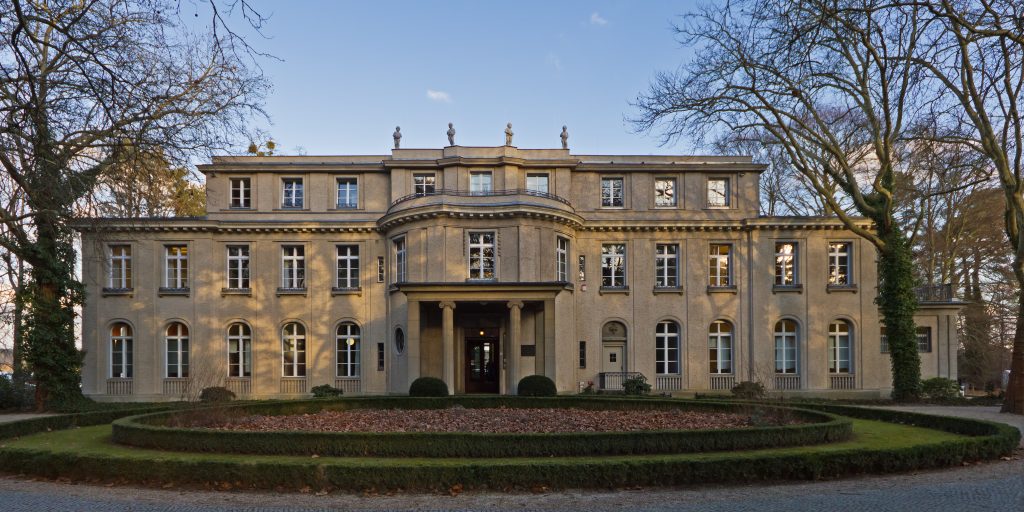
Eksterminacja Żydów przed konferencją w Wannsee
– 1941 r. na terenie ZSRR oddziały Einsatzgruppen wymordowały pół miliona Żydów, Romów i jeńców wojennych – przy pomocy Białorusinów, Ukraińców i Litwinów (Biały Jar koło Kijowa – ponad 100 tys. ludzi, Ponary koło Wilna – ponad 80 tys.)
-eksterminacja przy pomocy broni maszynowej – według Niemców zbyt kosztowna i zbyt powolna; problem z ciałami.
Po konferencji w Wannsee:
-obozy zagłady (obozy śmierci), w których dokonywano masowych morderstw, za pomocą przemysłowych metod (Cyklon B, palenie zwłok w krematoriach)
-Reinhard Heydrich – głównodowodzący całej akcji
OBOZY ZAGŁADY
-Kulmhof (Chełmno nad Nerem w Wielkopolsce) – pierwszy obóz zagłady,
-Bełżec, w województwie lubelskim,
-Treblinka
-Sobibór
-Auschwitz- Birkenau – Oświęcim – Brzezinka
-Majdanek
Obozy pracy- eksterminacja poprzez nadludzki wysiłek podczas pracy
-Gross – Rosen (Rogoźnica)
Obozy jenieckie – oflagi i stalagi – (oficerowie, szeregowi)
Więzienia policyjne Fort VII w Poznaniu, Pawiak w Warszawie, Radogoszcz w Łodzi
Obozy germanizacyjne dla dzieci – Kinder KL Litzmannstadt

Dlaczego w Polsce?
-przekonanie, że Polscy nie będą pomagać Żydom,
-centralne położenie Polski umożliwiało transporty z całej Europy,
-dobrze rozwinięta sieć kolejowa ułatwiała transport ofiar
PONAD 3 mln Żydów w II RP (10%), w Warszawie 30% ludności, w Zawierciu prawie 20%.
Obozy były instytucjami państwowymi. Główne grupy, które pracowały w obozach, to:
- Załoga SS, której liczba wzrastała wraz z rozwojem obozów, odpowiadała za całościowe zarządzanie, nadzór i funkcjonowanie systemu obozowego. Wśród nich byli:
- Komendanci obozów (np. Rudolf Höss w Auschwitz).
- Męscy strażnicy i podoficerowie z formacji SS-Totenkopfverbände (Oddziały Trupiej Czaszki).
- Personel medyczny SS, w tym lekarze i sanitariusze, którzy brali udział w zbrodniczych procedurach, jak selekcje i uśmiercanie więźniów (Josef Mengele).
- Żeński personel nadzorczy (SS-Aufseherin)
- Więźniowie funkcyjni: SS wyznaczało spośród więźniów osoby do pełnienia funkcji nadzorczych, aby pomogły w zarządzaniu obozem i utrzymaniu porządku. Pełnienie tych funkcji wiązało się z pewnymi przywilejami, jak lepsze wyżywienie czy ubrania, jednak często dochodziło do nadużyć.
- Kapowie: Nadzorowali oddziały robocze (komanda) i egzekwowali rozkazy SS. Byli zmuszani do brutalności wobec innych więźniów.
- Starsi blokowi: Odpowiadali za porządek w barakach i kontrolę nad mieszkającymi w nich więźniami.
- Sonderkommando: W obozach zagłady, jak Auschwitz-Birkenau, byli to głównie żydowscy więźniowie, zmuszeni do obsługi komór gazowych i krematoriów pod groźbą natychmiastowej śmierci za odmowę.
- Robotnicy cywilni: W niektórych obozach, takich jak Auschwitz, pracowali również robotnicy cywilni, którzy byli zatrudnieni przez firmy wykorzystujące niewolniczą pracę więźniów, w tym przez niemieckie przedsiębiorstwa takie jak IG Farben czy Siemens.
Czy możemy podać przykłady, jak narastała nienawiść w stosunku do Żydów?
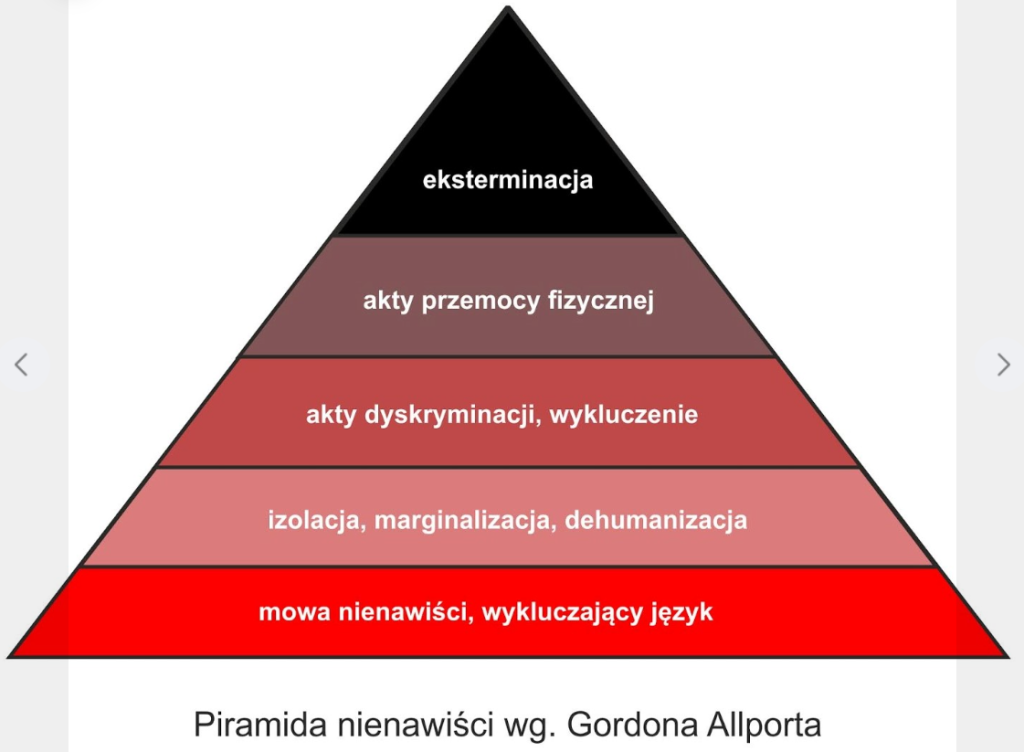
Renata Stih & Frieder Schnock: Places of Remembrance – Memorial in the Bavarian Quarter in Berlin-Schöneberg (1993)
31.03.1933r. – „Od 1 kwietnia 1933 r. koszty leczenia u lekarza żydowskiego nie będą zwracane przez Publiczną Kasę Chorych”;
„Żydowscy sędziowie zostają zawieszeni”
1.04.1933r. – „Wszystkie lokalne urzędy muszą zawiesić żydowskich nauczycieli”
25.04.1933r. -„Żydzi są wykluczeni z drużyn sportowych”
9.07.1933r. – „Żydzi zostają wykluczeni z Niemieckiej Federacji Szachowej”
16.08.1933r. – „Żydzi zostają usunięci z chórów.”
5.03.1934r. – „Zakaz zatrudniania żydowskich aktorów i aktorek”
31.03.1935r. – „Zakaz zatrudniania żydowskich muzyków”
15.09.1935r. – „Zakazuje się małżeństw mieszanych (pod groźbą więzienia).” Małżeństwa mieszane od dziś są nieważne”.
29.01.1936r. – „Wprowadzone zostają znaki „Żydzi są tu niechciani””
3.04.1936r. -„Żydowscy weterynarze nie mogą prowadzić praktyk”
15.04.1936r. „Dziennikarze musza udowodnić swoje i swojego współmałżonka pochodzenie do 1800 roku wstecz”
4.10.1936r. – „Chrzest i nawrócenie Żydów na chrześcijaństwo nie mają żadnego związku z kwestią rasy”
15.04.1937r. – „Żydzi nie mogą otrzymywać stopni naukowych”
22.03.1938r. – „Tylko honorowi towarzysze krwi niemieckiej lub pokrewnego pochodzenia mogą zostać działkowiczami”
25.07.1938r. – „Żydowscy lekarze nie mogą już praktykować”
17.08.1938r. – „Wszyscy Żydzi muszą przyjąć imię 'Israel’ lub 'Sara'”
5.10.1938r. – „Paszporty należące do Żydów oznaczone zostają literą J. Paszporty zostają skonfiskowane Żydom, którym nie wolno emigrować”
9/10.11.1939r. – NOC KRYSZTAŁOWA
15.11.1938r. – „Dzieci żydowskie nie mogą uczęszczać do szkół publicznych”.
1938 r.- „Dzieci Aryjskie i Nie-Aryjskie nie mogą się bawić razem”
grudzień 1938r. – niektóre części Berlina zostają zamknięte dla Żydów
21.12.1938r. – „Żydowskie kobiety nie mogą być położnymi”
21.02.1939r. – „Biżuteria, przedmioty wykonane ze złota, srebra lub platyny, perły należące do Żydów mają zostać zwrócone państwu”
30.04.1939r. – „Umowy najmu z Żydami mogą zostać rozwiązane bez podania przyczyny”
1.09.1939r. – „Żydom nie wolno opuszczać mieszkań po godzinie 20:00”.
1939r. – „Na Bayerischer Platz w Berlinie Żydzi mogą siadać tylko na ławkach parkowych oznaczonych żółtym kolorem”
18.09.1939r. -„W środkach transportu publicznego Żydzi mogą usiąść tylko wówczas, gdy pozostali podróżni zajęli już miejsca”
23.09.1939r. -„Żydom konfiskuje się radia”
4.07. 1940r. – „Żydom w Berlinie żywność wolno kupować tylko między godziną 4 a 5 popołudniu”
29.07.1940r. – „Odcięte zostają połączenia telefoniczne do Żydów”
26.06.1941r. „Żydom nie wolno kupować mydła i kremu do golenia”
1.09.1941r. – „Wszyscy Żydzi zobligowani są do noszenia żółtej gwiazdy z napisem 'Żyd'”.
13.09.1941r. – „Żydom wolno korzystać z transportu publicznego tylko w celu dojazdu do pracy”.
18.10.1941r. – rozpoczynają się pierwsze masowe deportacje Żydów
20.01.1942r. – konferencja w Wannsee
24.03.1942 r. – „Żydzi mogą korzystać z transportu publicznego tylko jeśli miejsce pracy jest oddalone od domu o więcej niż 7 km, a dzieci żydowskie gdy szkoła oddalona jest więcej niż 5 km.”
20.06.1942 r. – „Zakaz uczęszczania do szkół”.
22.06.1942r. – „Jajka nie będą już sprzedawane Żydom”
10.07.1942r. – „Mleko również”
11.07.1942 – pierwsze deportacje bezpośrednio do obozu zagłady Auschwitz
7.08.1942r. – „Polacy i Żydzi nie mogą być świadkami w sprawach sądowych przeciwko Niemcom”
9.10.1942r. – „Żydom nie wolno kupować książek”
26.03.1943r. – „Zorganizowano aresztowania w miejscu pracy w celu deportacji”
1943r. – relacja – „Mieliśmy kanarka, kiedy otrzymaliśmy zawiadomienie, że Żydom nie wolno posiadać zwierząt domowych. Mój mąż nie mógł się z nim rozstać. Każdego słonecznego dnia wystawiał go na parapet. Być może ktoś na niego doniósł bo pewnego dnia wezwano go do Gestapo. (…) Po wielu tygodniach życia w strachu policja wysłała mi zawiadomienie, w którym poinformowała że muszę zapłacić opłatę w wysokości 3 marek niemieckich za odbiór prochów mojego męża”
16.02.1945r. – „Wszystkie dokumenty zawierające ślady działalności antysemickiej muszą zostać zniszczone”
Postawy ludzkie wobec Holokaustu
„Tyle wiemy o sobie, ile nas sprawdzono” (W. Szymborska).
Grupa 1
Wyszukanie w filmie postaw Polaków pozytywnych i negatywnych w sytuacji wojennej i powojennej.
Grupa 2
Pozytywne i negatywne postawy Niemców.
Grupa 3
Pozytywne i negatywne postawy Żydów.


POSTAWY POLAKÓW
Polska była jedynym krajem okupowanym przez Niemcy w czasie II wojny światowej, w którym formalnie wprowadzono karę śmierci dla każdego, kto ukrywa lub pomaga w inny sposób Żydom. Pomimo tego, Polacy stanowią największą grupę pośród Sprawiedliwych Wśród Narodów Świata.
CEL: Poznasz postawy Polaków wobec zagłady ludności żydowskiej.
Żydzi nie byli jedyną grupą poddaną masowej eksterminacji –> Problem „Porajmos ” Romów i Sinti.
POLECENIE:
Podzielcie się na dwie grupy. W pierwszej znajdą się osoby, które zgadzają się z poniższą tezą, w drugiej te, które się z nią nie zgadzają.
Czy zgadzasz się ze słowami Icchaka Cukiermana: „żeby spowodować śmierć stu Żydów, wystarczył jeden polski donosiciel, ale żeby pomóc jednemu Żydowi, potrzebna była czasami pomoc dziesięciu Polaków, pomoc całej polskiej rodziny”?
Waszym dzisiejszym zadaniem będzie sformułowanie pięciu argumentów, które pomogą obronić tezę lub ją obalić.
DYSKUSJA
Czy Polacy powinni się jeszcze bardziej zaangażować w pomoc swoim żydowskim sąsiadom?
REFLEKSJA:
› Jakie emocje wzbudziła w Tobie dzisiejsza dyskusja?
› Jak oceniasz postawy Polaków oraz władz polskich wobec zagłady?
› Czy – twoim zdaniem – zrobiono wszystko, co można było zrobić w realiach okupacji, aby ocalić jak największą liczbę Żydów?
